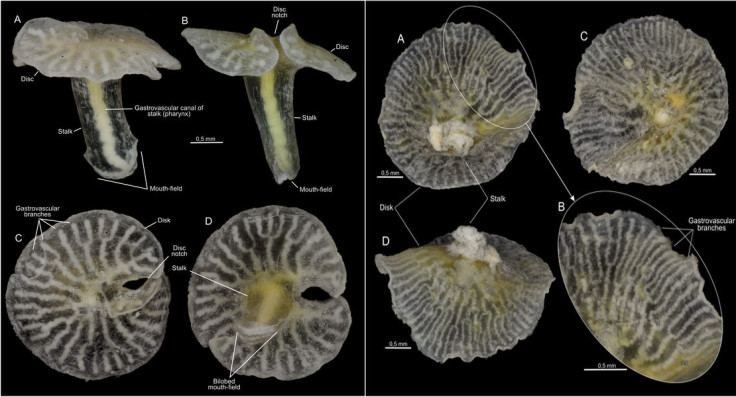New Species Of Mushroom-Shaped Organisms Discovered Off Australian Coast

A group of scientists have discovered two new species of sea-dwelling organisms that look like mushrooms, according to a new study, published in the journal PLOS ONE on Wednesday. While researchers have created a new taxonomic family to classify these creatures, details about their food habits, life style and how they reproduce are still unknown.
The researchers had collected some of the organisms at depths between 1,312 feet and 3,280 feet on the southeast Australian continental slope in 1986, but managed to isolate two types of the mushroom-shaped organisms only recently. Officially dubbed “Dendrogramma enigmatica” and “Dendrogramma discoides,” the two new organisms have multiple cells and a dense layer of gelatinous material between the outer skin cell and inner stomach cell layers.
“We don't even know if they're upside down,” Jean Just, a taxonomist at the Natural History Museum of Denmark, and the study’s lead author, told Live Science. “They lack all of the characteristics that would put them in one phylum or another. I think their closest relatives are probably the Cnidaria [true jellyfish] and the comb jellies, even if we can't place them in either of those phyla,” Just said, referring to the term denoting a group of related animals or plants.
According to the scientists, the organisms have flat discs that measure about half an inch in width. There is also a fan of digestive tubes spreading out like bicycle-tire spokes while their “mouth” opens into a tail, which is probably used for both eating food and excreting waste, Live Science reported, citing Just.
Both species also have similarities to many 600-million-year-old extinct life forms, the scientists said, adding that they are yet to determine if the new species are living fossils or evolutionary mimics of those ancient creatures.
“New mushroom-shaped animals from the deep sea discovered which could not be placed in any recognized group of animals,” Jørgen Olesen of Aarhus University, Denmark, said in a statement. “Two species are recognized and current evidence suggest that they represent an early branch on the tree of life, with similarities to the 600 mill old extinct Ediacara fauna.”
© Copyright IBTimes 2024. All rights reserved.






















